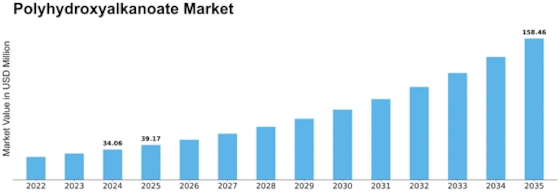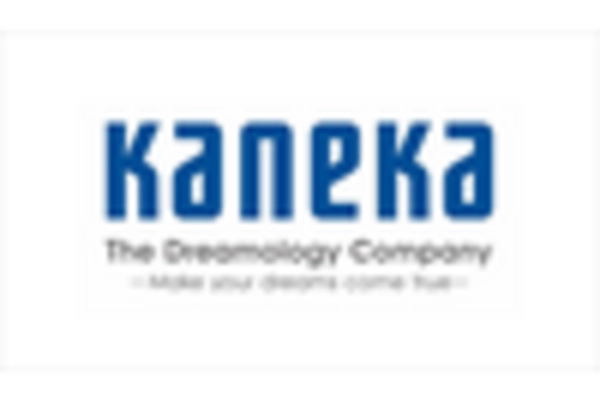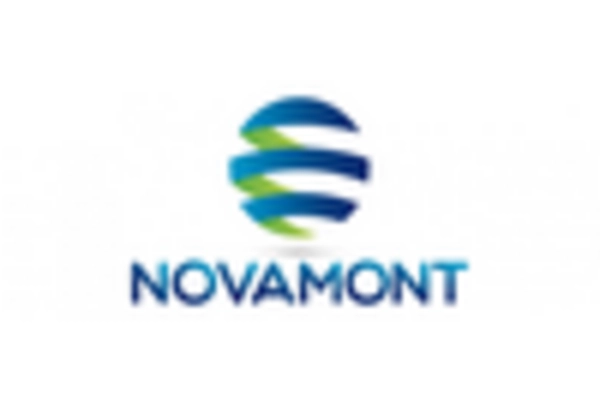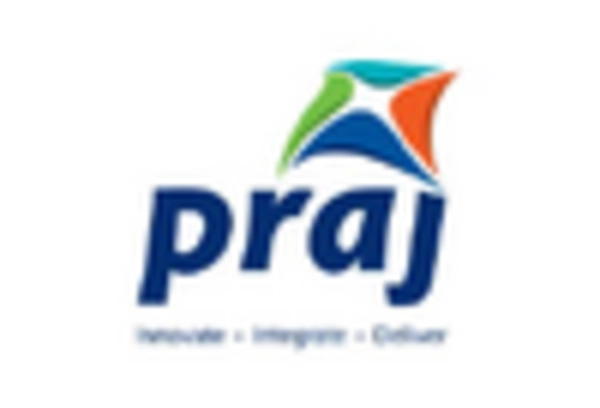Polyhydroxyalkanoate Size
Polyhydroxyalkanoate Market Growth Projections and Opportunities
The Polyhydroxyalkanoate (PHA) market is influenced by several market factors that impact its growth and development. These factors range from technological advancements and government regulations to consumer preferences and market demand. One significant market factor driving the growth of the PHA market is the increasing demand for sustainable and eco-friendly materials. With growing concerns about environmental pollution and the depletion of natural resources, there is a growing preference for biodegradable materials like PHA, which can be produced from renewable resources such as plant-based sugars or waste streams.
Polyhydroxyalkanoate polymers are produced by microbial fermentation of unprocessed raw materials. They are produced under the brand name Biopol. Polyhydroxyalkanoate polymers are extracted from renewable sources such as vegetable oil, starch, proteins, and others. They are non-toxic, provide high UV resistance and exhibit biocompatible properties. They also show optical display and piezoelectric effect. Owing to these characteristics, Polyhydroxyalkanoate Polymers are used in various applications such as packaging, biomedical, biofuels and drugs.
Additionally, government regulations and policies promoting sustainable development and reducing plastic pollution are also driving the growth of the PHA market. Many countries and regions have implemented bans or restrictions on single-use plastics and are incentivizing the use of biodegradable alternatives like PHA through policies such as plastic taxes or subsidies for bioplastics production. These regulations create a favorable market environment for PHA manufacturers and encourage investment in research and development to improve PHA production processes and reduce costs.
Moreover, advancements in technology have also played a significant role in the growth of the PHA market. Innovations in biotechnology, fermentation processes, and genetic engineering have made it possible to produce PHA more efficiently and cost-effectively. This has led to an increase in the scalability of PHA production and a reduction in production costs, making PHA more competitive with traditional plastics.
Another important market factor influencing the PHA market is the growing awareness and adoption of sustainable packaging solutions by consumers and businesses. Companies across various industries, including food and beverage, cosmetics, and healthcare, are increasingly opting for biodegradable packaging materials like PHA to meet consumer demands for environmentally friendly products. This trend is expected to drive the demand for PHA in the packaging industry and create opportunities for PHA manufacturers to expand their market presence.
Furthermore, partnerships and collaborations between PHA manufacturers, research institutions, and government agencies are also contributing to the growth of the PHA market. These collaborations help in advancing research and development efforts, accelerating innovation, and commercializing new PHA products and applications. Additionally, strategic partnerships with downstream users and distributors help PHA manufacturers penetrate new markets and expand their customer base.
However, despite the positive market factors driving the growth of the PHA market, there are also challenges and barriers that need to be addressed. One of the key challenges is the high production costs of PHA compared to traditional plastics. Although advancements in technology have helped reduce production costs, PHA still remains more expensive than conventional plastics, which can hinder its widespread adoption, particularly in price-sensitive markets.
Moreover, the lack of infrastructure for PHA recycling and composting poses a challenge to the widespread adoption of PHA as a sustainable alternative to traditional plastics. While PHA is biodegradable under certain conditions, it requires specific composting facilities to break down efficiently, and the lack of such facilities limits its end-of-life options. Efforts to develop and invest in composting infrastructure are needed to support the growth of the PHA market and ensure the effective disposal of PHA products.










Leave a Comment